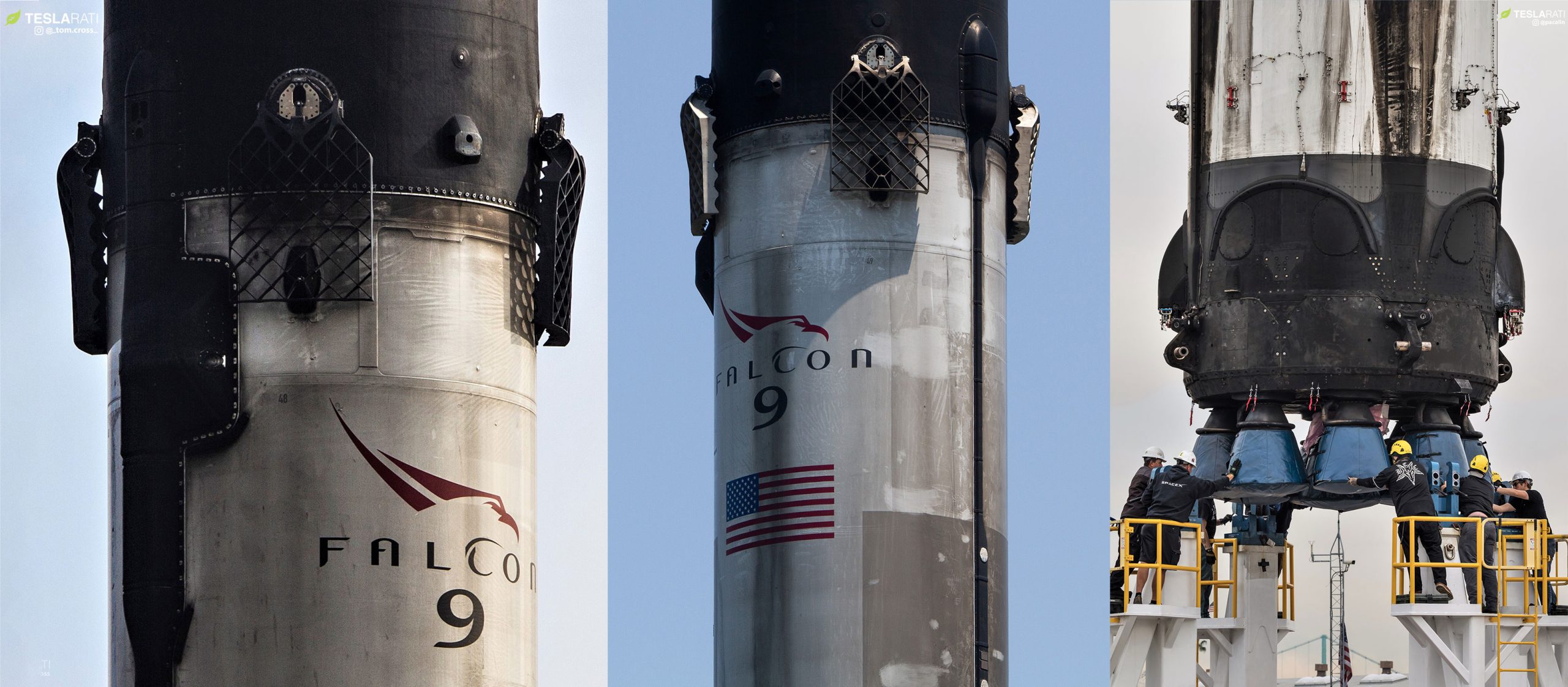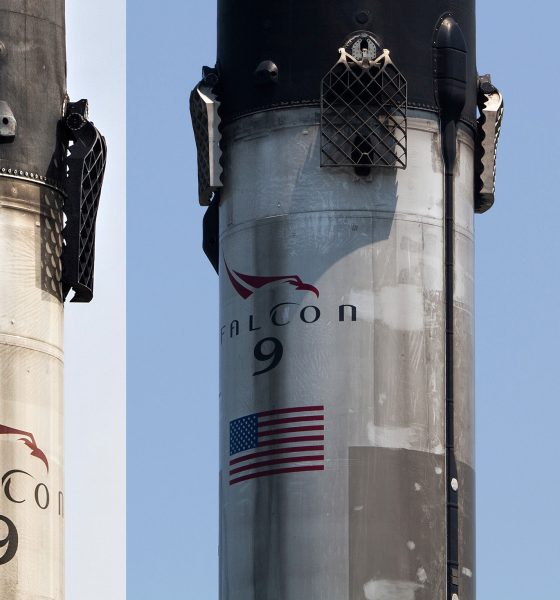

News
SpaceX’s flight-proven Falcon 9 snags NASA launch contract, second of 2019
NASA has announced that SpaceX’s Falcon 9 rocket – using a flight-proven booster – will launch the ~300 kg (670 lb) Imaging X-ray Polarimetry Explorer (IXPE) spacecraft no earlier than April 2021.
Intriguingly, IXPE was originally planned to launch on Orbital ATK (now Northrop Grumman’s) Pegasus XL but NASA never followed through with a launch contract. The move to SpaceX’s Falcon 9 rocket is likely related to the extremely disruptive and expensive launch delays NASA’s Ionospheric Connection Explorer (ICON) spacecraft has suffered at the hands of its Pegasus XL rocket. Capable of launching less than 450 kg (1000 lb) to low Earth orbit, Pegasus XL has been lucky to launch annually over the last decade or so and carries a price tag of no less than $50M-$60M today.
To add to this: NASA says SpaceX can use a previously flown booster on this mission.
IXPE is a small satellite, but this launch contract is less than what NASA paid for for the still-pending Pegasus XL launch of ICON ($56.3M in a 2014 contract). Think about that… https://t.co/sJlWVMHC5c— Jeff Foust (@jeff_foust) July 8, 2019
Small rocket, huge delays
Defying its small size, Pegasus XL was originally scheduled to launch ICON in December 2017. Delayed by unspecified problems with launch vehicle hardware, the mission was pushed back an inexplicable 10 months to October 2018, where additional issues with the rocket again indefinitely scrubbed a launch attempt. In early 2019, the launch was tentatively scheduled for Q2 2019, while – as of July – ICON is not expected to launch before September 2019.
All said and done, in the increasingly unlikely event that Pegasus XL is ready for launch this September, the ICON spacecraft – ready for launch since late-2017 – will have been delayed more than 21 months by problems with the rocket.

Again, for the small-scale performance of Pegasus XL, the rocket still carries a price tag of more than $50M – NASA’s ICON launch contract was valued at more than $56M. Conscious of this, SpaceX has managed to sway NASA to launch the small IXPE spacecraft on a flight-proven Falcon 9 at a cost of just $50.3 million, easily the lowest Falcon 9 launch contract cost ever publicized.
In recent months, SpaceX executives have made comments indicating that Falcon 9’s default base price – likely assuming a flight-proven booster – is now as low as $50M. July 8th’s NASA launch contract is the first direct confirmation of that exceptionally affordable pricing, likely also indicating that the base price for Falcon 9 is even lower for commercial customers with less stringent requirements.

Barring an unexpected contract between now and IXPE’s expected April 2021 launch, the mission will probably be the first time that a dedicated flight-proven SpaceX rocket launches a scientific spacecraft for NASA. SpaceX’s next dedicated NASA launch – the ESA-built Sentinel 6A spacecraft – is scheduled to no earlier than November 2020 and is likely to fly on a new Falcon 9 booster.
In April 2019, NASA awarded SpaceX $69M for Falcon 9 to launch the agency’s Double Asteroid Redirect Test (DART) – an asteroid-impactor spacecraft – no earlier than June 2021. IXME is SpaceX’s second NASA launch contract win of 2019.

According to NASA, “IXPE will fly three space telescopes with sensitive detectors capable of measuring the polarization of cosmic X-rays, allowing scientists to answer fundamental questions about these turbulent environments where gravitational, electric and magnetic fields are at their limits.”
Check out Teslarati’s Marketplace! We offer Tesla accessories, including for the Tesla Cybertruck and Tesla Model 3.

News
Tesla (TSLA) receives “Buy” rating and $551 PT from Canaccord Genuity
He also maintained a “Buy” rating for TSLA stock over the company’s improving long-term outlook, which is driven by autonomy and robotics.

Canaccord Genuity analyst George Gianarikas raised his Tesla (NASDAQ:TSLA) price target from $482 to $551. He also maintained a “Buy” rating for TSLA stock over the company’s improving long-term outlook, which is driven by autonomy and robotics.
The analyst’s updated note
Gianarikas lowered his 4Q25 delivery estimates but pointed to several positive factors in the Tesla story. He noted that EV adoption in emerging markets is gaining pace, and progress in FSD and the Robotaxi rollout in 2026 represent major upside drivers. Further progress in the Optimus program next year could also add more momentum for the electric vehicle maker.
“Overall, yes, 4Q25 delivery expectations are being revised lower. However, the reset in the US EV market is laying the groundwork for a more durable and attractive long-term demand environment.
“At the same time, EV penetration in emerging markets is accelerating, reinforcing Tesla’s potential multi‑year growth runway beyond the US. Global progress in FSD and the anticipated rollout of a larger robotaxi fleet in 2026 are increasingly important components of the Tesla equity story and could provide sentiment tailwinds,” the analyst wrote.
Tesla’s busy 2026
The upcoming year would be a busy one for Tesla, considering the company’s plans and targets. The autonomous two-seat Cybercab has been confirmed to start production sometime in Q2 2026, as per Elon Musk during the 2025 Annual Shareholder Meeting.
Apart from this, Tesla is also expected to unveil the next-generation Roadster on April 1, 2026. Tesla is also expected to start high-volume production of the Tesla Semi in Nevada next year.
Apart from vehicle launches, Tesla has expressed its intentions to significantly ramp the rollout of FSD to several regions worldwide, such as Europe. Plans are also underway to launch more Robotaxi networks in several more key areas across the United States.
News
Waymo sues Santa Monica over order to halt overnight charging sessions
In its complaint, Waymo argued that its self-driving cars’ operations do not constitute a public nuisance, and compliance with the city’s order would cause the company irreparable harm.

Waymo has filed a lawsuit against the City of Santa Monica in Los Angeles County Superior Court, seeking to block an order that requires the company to cease overnight charging at two facilities.
In its complaint, Waymo argued that its self-driving cars’ operations do not constitute a public nuisance, and compliance with the city’s order would cause the company irreparable harm.
Nuisance claims
As noted in a report from the Los Angeles Times, Waymo’s two charging sites at Euclid Street and Broadway have operated for about a year, supporting the company’s growing fleet with round-the-clock activity. Unfortunately, this has also resulted in residents in the area reportedly being unable to sleep due to incessant beeping from self-driving taxis that are moving in and out of the charging stations around the clock.
Frustrated residents have protested against the Waymos by blocking the vehicles’ paths, placing cones, and “stacking” cars to create backups. This has also resulted in multiple calls to the police.
Last month, the city issued an order to Waymo and its charging partner, Voltera, to cease overnight operations at the charging locations, stating that the self-driving vehicles’ activities at night were a public nuisance. A December 15 meeting yielded no agreement on mitigations like software rerouting. Waymo proposed changes, but the city reportedly insisted that nothing would satisfy the irate residents.
“We are disappointed that the City has chosen an adversarial path over a collaborative one. The City’s position has been to insist that no actions taken or proposed by Waymo would satisfy the complaining neighbors and therefore must be deemed insufficient,” a Waymo spokesperson stated.
Waymo pushes back
In its legal complaint, Waymo stated that its “activities at the Broadway Facilities do not constitute a public nuisance.” The company also noted that it “faces imminent and irreparable harm to its operations, employees, and customers” from the city’s order. The suit also stated that the city was fully aware that the Voltera charging sites would be operating around the clock to support Waymo’s self-driving taxis.
The company highlighted over one million trips in Santa Monica since launch, with more than 50,000 rides starting or ending there in November alone. Waymo also criticized the city for adopting a contentious strategy against businesses.
“The City of Santa Monica’s recent actions are inconsistent with its stated goal of attracting investment. At a time when the City faces a serious fiscal crisis, officials are choosing to obstruct properly permitted investment rather than fostering a ‘ready for business’ environment,” Waymo stated.
News
Tesla FSD v14.2.2 is getting rave reviews from drivers
So far, early testers have reported buttery-smooth drives with confident performance, even at night or on twisty roads.

Tesla Full Self-Driving (Supervised) v14.2.2 is receiving positive reviews from owners, with several drivers praising the build’s lack of hesitation during lane changes and its smoother decision-making, among others.
The update, which started rolling out on Monday, also adds features like dynamic arrival pin adjustment. So far, early testers have reported buttery-smooth drives with confident performance, even at night or on twisty roads.
Owners highlight major improvements
Longtime Tesla owner and FSD user @BLKMDL3 shared a detailed 10-hour impression of FSD v14.2.2, noting that the system exhibited “zero lane change hesitation” and “extremely refined” lane choices. He praised Mad Max mode’s performance, stellar parking in locations including ticket dispensers, and impressive canyon runs even in dark conditions.
Fellow FSD user Dan Burkland reported an hour of FSD v14.2.2’s nighttime driving with “zero hesitations” and “buttery smooth” confidence reminiscent of Robotaxi rides in areas such as Austin, Texas. Veteran FSD user Whole Mars Catalog also demonstrated voice navigation via Grok, while Tesla owner Devin Olsen completed a nearly two-hour drive with FSD v14.2.2 in heavy traffic and rain with strong performance.
Closer to unsupervised
FSD has been receiving rave reviews, even from Tesla’s competitors. Xpeng CEO He Xiaopeng, for one, offered fresh praise for FSD v14.2 after visiting Silicon Valley. Following extended test drives of Tesla vehicles running the latest FSD software, He stated that the system has made major strides, reinforcing his view that Tesla’s approach to autonomy is indeed the proper path towards autonomy.
According to He, Tesla’s FSD has evolved from a smooth Level 2 advanced driver assistance system into what he described as a “near-Level 4” experience in terms of capabilities. While acknowledging that areas of improvement are still present, the Xpeng CEO stated that FSD’s current iteration significantly surpasses last year’s capabilities. He also reiterated his belief that Tesla’s strategy of using the same autonomous software and hardware architecture across private vehicles and robotaxis is the right long-term approach, as it would allow users to bypass intermediate autonomy stages and move closer to Level 4 functionality.








